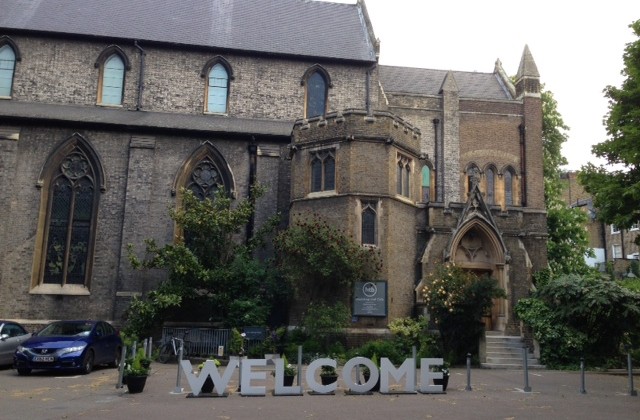
If we welcomed strangers into our homes like we welcome strangers into our churches, they’d never come back. Why? In our zeal to have another warm body in worship, we often forget the common-sense practices of hospitality that orient them to our space, let them know who we are, and communicate we want to see them again. Put simply, we need to stop assuming our visitors are friends (insiders) and start treating them like guests (outsiders). Here are some ideas:
Orient visitors.
One of the principle jobs of any host is to orient our guests to the space. This begins with something as simple as making clear which door we’d like them to enter, in the same way we might tie balloons on the porch railing if we were having a party with folks who had never been to our house before.
After they came inside, we might then tell them where the bathroom is or where to put their coat or where they can linger until the festivities start. If as church members we think it’s enough to offer our visitors a cheerful “Welcome!” at the door to the sanctuary, we’re wrong. Showing up at a new church is hard enough. Knowing what to do next puts guests at ease.
Let them know who you are.
Another way we put our guests at ease is to engage them in small talk about who we are. I’m not a fan of small talk any more than the next introvert, but without it a deep dive into the spiritual stuff can feel unsafe.
The bulletin might be one place to share about our church’s mission, staff, and denomination. Another place might be in an official welcome that starts every service. Again, like we would do if hosting our own party, we need to tell the congregation our name, our connection to this house (of worship), and our hope for why we’re gathered here today. To go straight into the order of worship is to assume familiarity with not only our church but also the culture of Christianity, and threatens to ostracize the outsider.
Communicate that you want to see them again.
Finally, when time with our guests is coming to a close, it’s natural to communicate that we want to see them again–and how. Sure, we might be eager to invite them back to our house again, same time next week.
But so, too, might we take a few minutes to see where they live, work, and love and meet next on their terms. A healthy relationship with church visitors is marked by a mutuality in which we celebrate the interest the stranger has shown in us and practice a holy curiosity into what gifts they might offer our community in return. The best hosts are the ones who can take off their apron and sit at the feet of others as guests.
When churches move too quickly toward treating strangers as friends, we can come across disorganized, disinterested, or disingenuous. To welcome strangers as guests is to honor the slow work of relationship and the difficult road to belonging.
Erin S. Lane is author of Lessons in Belonging from a Church-Going Commitment Phobe (IVPress). To order a copy go to resources.
